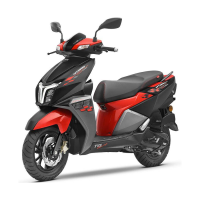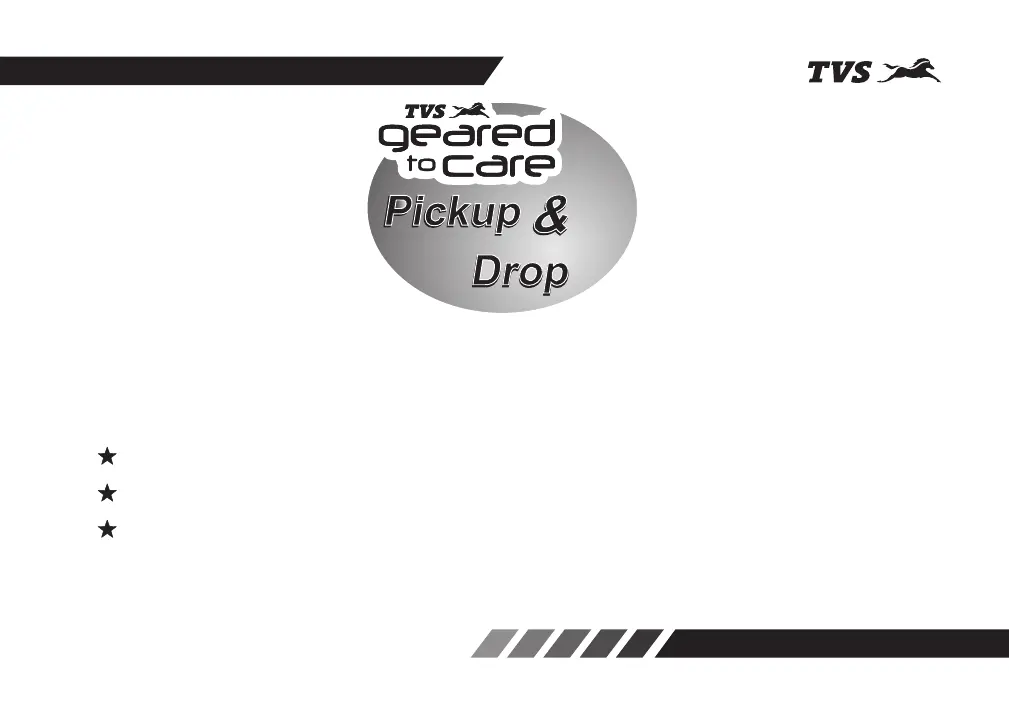
 Loading...
Loading...
Do you have a question about the TVS NTORQ 125 and is the answer not in the manual?
| Displacement | 124.8 cc |
|---|---|
| Max Torque | 10.5 Nm @ 5, 500 rpm |
| Fuel System | Fuel Injection |
| Transmission | CVT |
| Front Brake | Disc |
| Rear Brake | Drum |
| Kerb Weight | 118 kg |
| Front Tyre | 100/80-12 |
| Rear Tyre | 110/80-12 |
| Starting Method | Electric Start |
| Tyre Type | Tubeless |
| Seat Height | 770 mm |
| Ground Clearance | 155 mm |
| Engine Type | Single Cylinder, 4-Stroke, Air Cooled |
| Front Suspension | Telescopic |
| Fuel Tank Capacity | 5.8 liters |
| Wheelbase | 1285 mm |
| Rear Suspension | Coil Spring, Hydraulic Damped |
Primary contacts for assistance and queries, including toll-free numbers.
Listing of regional service and support centers across various states.
Details on the 3-valve engine, kill switch, and econometer.
Overview of the advanced display, Bluetooth, and app integration.
Information on lamps, DRLs, braking technologies, and tyres.
Bag hooks, centre stand, external fuel fill, and under-seat storage.
Explanation of safety symbols and precautions.
Procedures for initial operation and safe driving techniques.
Guidance on posture, cornering, braking, and key controls.
Locating frame and engine serial numbers for identification.
Identifying parts and controls on the handlebar.
Operation of the control key and ignition system.
Detailed explanation of the digital display, indicators, and various riding modes.
Steps for connecting a phone and using the TVS Connect app.
Essential checks before operating the vehicle.
Procedures for checking and topping up essential fluids.
Adjusting brakes and checking wear indicators.
Tyre pressure, tread, and wheel removal/reassembly.
Recommended service intervals, tasks, and lubricant types.
Detailed coverage, conditions, and what's not covered.
Information on scheduled services and maintaining service records.